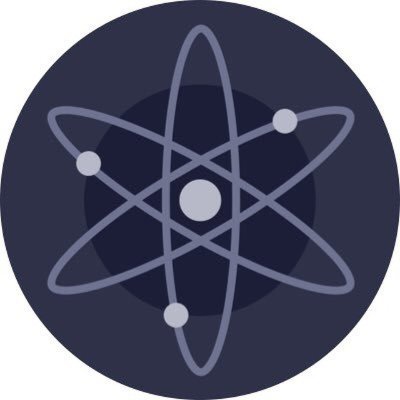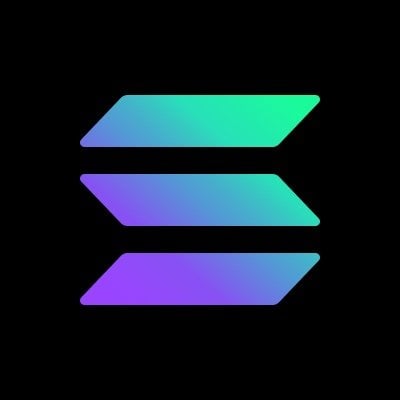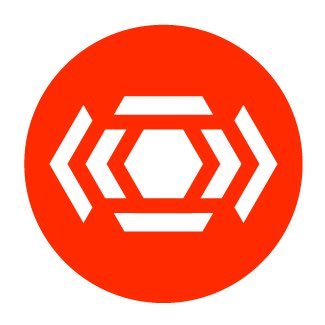ArkStream Capital: The market may not only be L2, new public chains cannot be ignored
Author: Ray, ArkStream Capital
The Environment of New Public Chains
If there exists a law of universal gravitation in the blockchain world, then currently, Bitcoin and Ethereum are like the two brightest stars, illuminating this brilliant starry domain. The reason they can shine brightly among the myriad stars lies in their unique technological implementations (i.e., blockchain and smart contract platforms) and years of continuous iteration and upgrades, which have cumulatively formed a massive market value, a prosperous ecosystem, and an active community.
Once, during the cryptocurrency cycle from 2017 to 2021, we often heard the term "Ethereum killer," as many new public chains aimed to surpass Ethereum, proposing their own technical architectures and implementation plans. For example, there was Solana with its Proof of History, Avalanche with its avalanche protocol and subnet features, NEAR focusing on sharding technology, Flow using consensus and computation separation, EOS with parallel processing and asynchronous communication capabilities, IOTA with its DAG transaction structure, and Polkadot and Cosmos with native multi-chain support. It must be said that they all achieved success in specific time periods regarding on-chain user activity, DApp development, and TVL metrics.
However, due to various reasons (such as teams becoming complacent and funding collapses) and the gradual launch of Ethereum's Rollup layer two, the situation has quietly changed. The most obvious change is that on DeFiLlama's public chain TVL leaderboard, Arbitrum and Optimism have surpassed most Alt L1s. Additionally, some innovative projects have shifted their focus to Rollup layer two networks, with the most representative example being the derivatives platform GMX migrating from Avalanche to Arbitrum.
At this current moment, the stable development of Bitcoin and Ethereum, along with the rapid growth of layer two networks, is clearly exerting pressure on the once vibrant Alt-L1 market. Many Alt-L1 projects seem to be in a "stagnation" bottleneck, indicating an unoptimistic future for new public chains. Taking the recent Move-based public chains Aptos and Sui as examples, the market's perception of them has changed dramatically. Before the mainnet launch, there was enthusiasm for deeply interpreting their whitepapers and technical architectures, envisioning their application scenarios, and developers eagerly learning new contract languages while DApp projects competed for ecological niches on the new public chains. However, after the mainnet launch, especially following the token issuance, with the DApp ecosystem's downturn and lackluster TVL data, everything seems to drift away from us.
PS: Considering that privacy public chains emphasize anonymity and user privacy protection, while storage public chains emphasize decentralized storage, their design philosophies and technical routes differ from general-purpose public chains. To keep the discussion more focused and in-depth, we will temporarily not explore privacy public chains and storage public chains.
The Necessity of Developing New Public Chains
It can be confidently stated that developing and implementing new public chains today, to challenge the two giants Bitcoin and Ethereum, or even the newly thriving layer two networks, is undoubtedly a challenging endeavor. This leads us to ponder a question: Is it necessary to continue developing new public chains?
The answer is affirmative. From the perspective of Mass Adoption, the entire Web3 landscape has seen a rich array of new application scenarios, including DeFi, NFTs, and the Metaverse, since 2020, with user adoption rising to millions or even tens of millions. However, even so, compared to technologies that have already achieved Mass Adoption, such as search engines and instant messaging, the development space for Web3 remains vast. If we compare the infrastructure of Web3 public chains to traditional cloud computing, the number of applications and users for public chain services is still in a rapid growth phase and has not yet reached a mature stage of large-scale application. Therefore, the future market's vast potential and rapid demand changes will give rise to public chains with excellent service capabilities and responsiveness. Currently, in the public chain domain, Bitcoin and Ethereum have gained the first-mover advantage and widespread recognition and market share, but this does not mean that other Alt-L1s and new public chains lack survival space or opportunities to overtake in certain niche areas. For this reason, institutions are willing to invest significant funds in the public chain sector, not merely for financial investment considerations, but based on their judgments about the future of Web3 and the importance of public chains.
Hard Power and Soft Power
When we analyze public chains, we can evaluate them from the perspectives of hard power and soft power. Hard power mainly focuses on the technological innovations involved in public chains, such as P2P networks, consensus mechanisms, block data structures, smart contract languages and virtual machines, token economics, etc., as well as the adaptability and adjustment capabilities of the technological development route and current status. Soft power, on the other hand, involves business operation capabilities, ecosystem building, and capital coordination. Both types of power are indispensable in the research, implementation, and development of public chains. If there is only hard power without soft power, it is easy to fall into the trap of closed-door development; conversely, if there is only soft power without hard power, progress will inevitably be limited.
Regarding hard power, Alt-L1s often exhibit rigid and stubborn technological characteristics, which is why we emphasize the adaptability and adjustment capabilities of the technological development route and current status. Bitcoin, shortly after its creation by Satoshi Nakamoto, saw the entire network and community develop organically. When it comes to significant functional changes and new feature support, overall progress tends to be slow and conservative, but it has also begun to keep pace with the times, as seen with the recent popularity of the Ordinals protocol. Ethereum's scaling solutions, before officially transitioning to a Rollup-centric approach, also saw the Plasma solution gain popularity. In the new development roadmap released by Ethereum last year, we can see that the focus at the protocol level is primarily on optimizing the security and decentralization of the PoS consensus mechanism, the combination of data sharding and Rollup, while the original goals of eWASM and state sharding have been replaced by other functions.
Exploration of Innovative Technologies
When Ethereum's Frontier was launched in 2015, it provided a basic usable network with features such as PoW consensus mechanism, transactions, account models, and the core EVM smart contract platform. Over the years, Ethereum has continuously iterated and upgraded, for example: the more stable and efficient Homestead in 2016, the Metropolis Byzantium in 2017 supporting ZK-Snarks proof on-chain verification through precompiled contracts, the Beacon Chain supporting PoS functionality in 2020, the London Hard Fork in 2021 introducing the market-based transaction fee model EIP-1559, and the Paris upgrade (ETH Merge) in 2022 officially shutting down PoW and starting PoS. Ethereum embodies the spirit of blockchain's openness and freedom, beginning with rich programmability and never stopping, showcasing the continuous development of a public chain in the exploration of innovative technologies through repeated upgrades.
For this reason, whether focusing on newly launched public chains in the primary market or enthusiastic about older public chains that have been online for some time in the secondary market, those new and old public chains that dare to explore innovative technologies are worthy of our attention and study.
Next, we will temporarily set aside the merits of public chain economic model designs and the performance of market tokens, and, in conjunction with the open-source developer data panel provided by Electric Capital, select some interesting public chains outside of Ethereum to further study their unique or signature innovative technologies.
1. Polkadot - Substrate
Polkadot introduces the concepts of relay chains and parachains through blockchain parallelization technology, achieving shared security and inter-chain communication among multiple blockchains via the cross-chain communication protocol XCMP. The technical framework supporting these features of Polkadot is Substrate. Substrate provides the minimal development unit Pallets, abstracting various functional modules such as assets, staking, and EVM, and offers the development framework Frame and customizable Runtime for blockchains based on Pallets. Combined with a unique asynchronous model and parachain sharding mechanism, Substrate provides the capability to process a large number of transactions simultaneously, enhancing the overall network's throughput and performance.
Additionally, Substrate supports pluggable consensus mechanisms, allowing developers to choose different consensus algorithms based on their needs. Moreover, Substrate has built-in Ethereum EVM and WASM runtimes, facilitating the migration and development of applications in the Ethereum ecosystem. Finally, Substrate supports on-chain hot upgrades, allowing blockchain upgrades and updates without interrupting the network.
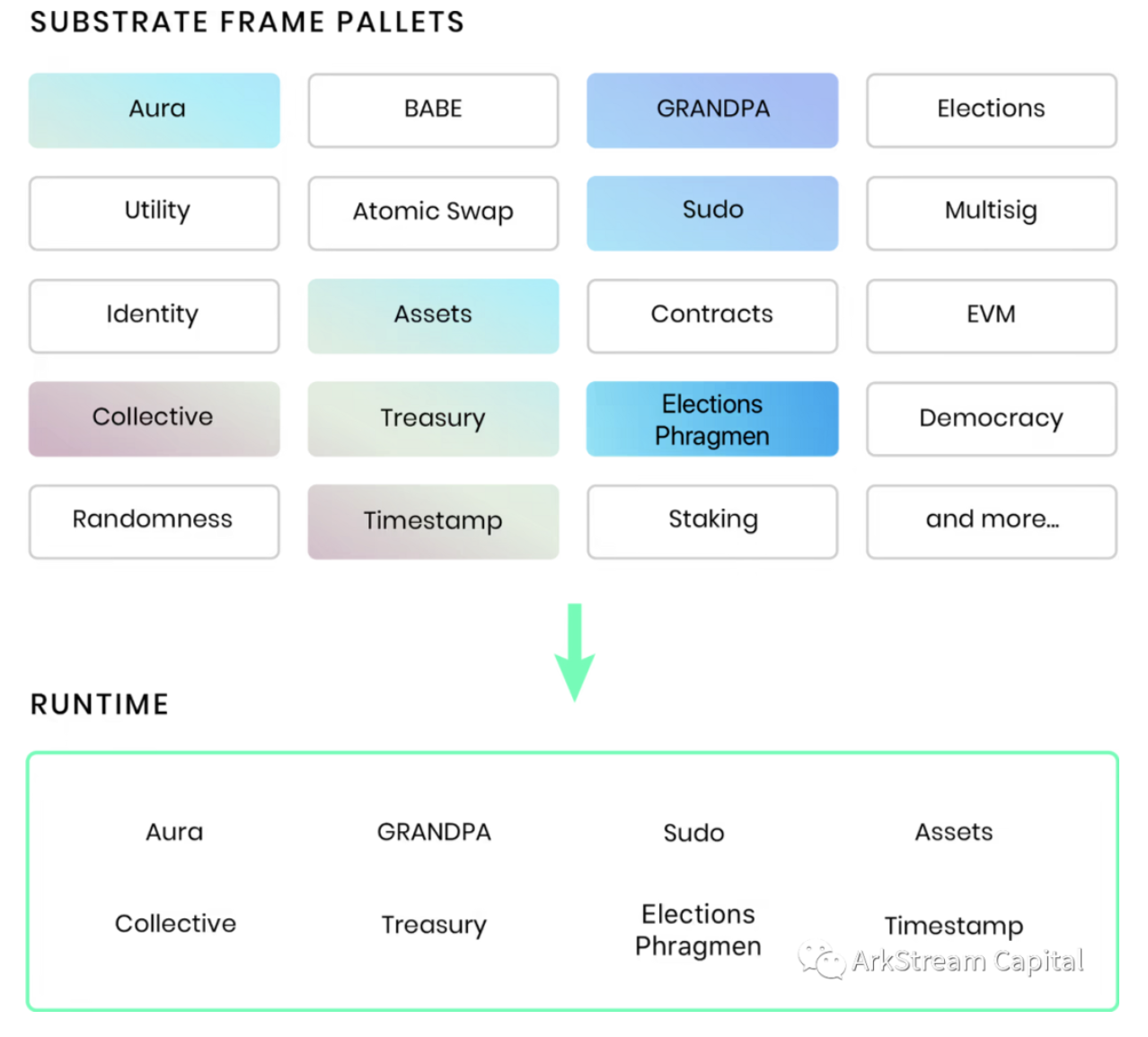
2. Cosmos - Tendermint / Sovereign Chain / App Chain / IBC
Tendermint is one of the first PoS consensus algorithms to achieve Byzantine fault tolerance and is also one of the inspirations for Ethereum's PoS algorithm. The concepts of Sovereign Chain and App Chain perfectly embody Cosmos's decentralized multi-chain philosophy, allowing each sovereign chain to have its own consensus mechanism, economic model, and governance rules, while also permitting specific applications or services to build small application chains directly through Cosmos's network. The two can communicate and interact with each other using IBC, collectively constructing a multi-chain Internet advocated by Cosmos.
The two core development kits of Cosmos are the consensus engine CometBFT (the successor of Tendermint Core) that implements the Tendermint consensus algorithm and defines the application link interface ABCI, and the Cosmos SDK that supports IBC and CosmWasm, among others. The corresponding ecological landscape features the center of the Cosmos network, Cosmos Hub, and various Zones connected to Cosmos Hub. Since the launch of the Cosmos mainnet in 2019, IBC has evolved from initially supporting interconnecting Zones and connecting Zones and Hub to richer and more comprehensive functionalities such as inter-chain accounts (ICA) and inter-chain security (ICS). Cosmos Hub also marked September 2022 as a key turning point, officially transitioning from the first phase of initiation to the second phase of integration.
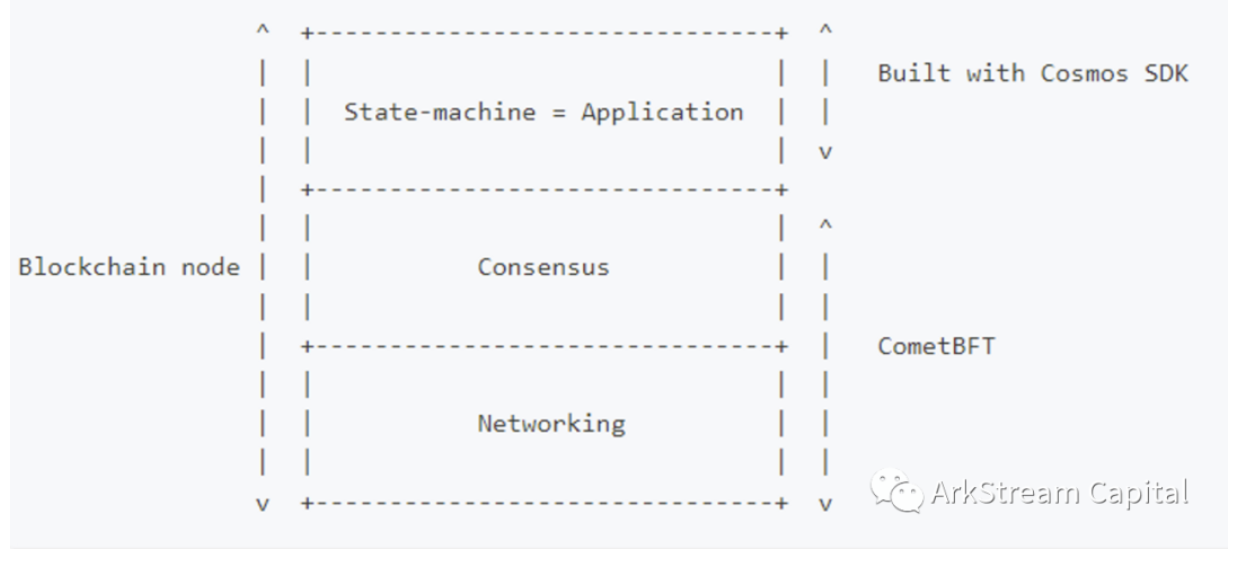
3. Sei Network - Optimized for Trading
As a recently launched popular application chain in the Cosmos ecosystem, Sei features a built-in order matching engine, sub-second settlement speed, parallel processing of orders, and single-block order execution. All these customized features of Sei are achieved at the base layer, primarily through ABCI++, which implements some optimizations for them. ABCI++ is an upcoming upgrade to Cosmos's ABCI that allows each step of consensus to be programmable.
4. Solana - Proof of History
Proof of History (PoH) is an innovative time-proofing technology that can be understood as a global clock implementation mechanism within a distributed system, used to coordinate operations and time sequences among distributed system nodes. By embedding timestamps in each block, PoH constructs a globally shared timeline within the Solana network, allowing nodes in the network to easily verify the order and time of transactions. This not only improves the overall throughput and performance of the network but also effectively prevents malicious tampering and replay attacks.
5. NEAR - Nightshade Sharding / Beacon Chain
Originating from Ethereum's early sharding ideas, NEAR also inherits the concept of the Beacon Chain but optimizes the block producers and validators for each shard. Each shard has a group of block producers responsible for generating blocks and packaging the transactions and state data within those blocks. Since each shard is relatively independent, each block producer only needs to focus on its own shard, allowing it to generate blocks independently without coordinating with block producers from other shards. Validators only need to verify transactions and states belonging to their own shard without concerning themselves with the entire network's state. This improves the efficiency of block production and validation, enabling the handling of more transactions and state updates.
6. Avalanche - Avalanche Consensus
The Avalanche protocol introduces a voting mechanism akin to an avalanche effect, allowing nodes to rapidly reach consensus and form a consistent decision sequence across the network. The key to the protocol lies in the multi-round voting and iterative decision-making process, where nodes gradually converge to a consistent consensus result through continuous voting and feedback. As nodes can vote and make decisions in parallel, the overall system's parallel processing capability is enhanced, and the Avalanche protocol also allows for dynamic entry and exit of nodes and adaptive adjustments of voting rules and parameters, achieving flexible scalability.
7. Flow - Multi-Node Architecture
Flow features a pipeline-style multi-node architecture. Execution nodes are responsible for executing transactions, achieving massive processing and computation operations. Validation nodes monitor and verify the computation results of execution nodes, ensuring that execution nodes correctly execute smart contracts according to the rules and validate the accuracy and consistency of the computations. Consensus nodes are responsible for transaction ordering and block generation, ensuring the network's security. This multi-node architecture is reminiscent of the modular blockchain's advocacy for execution layers, data availability layers, settlement layers, and consensus layers being directly implemented at the public chain level.
8. Monad - Asynchronous Concurrent Transactions
Monad is an EVM-compatible L1, and transactions are also EVM equivalent. To improve TPS, Monad identifies and marks transactions that do not affect each other, thereby eliminating their common dependencies, and then achieves high concurrent transaction performance through asynchronous execution mechanisms.
9. Diem/Libra - Move
Facebook/Meta's Diem (formerly Libra) has attracted global attention since its inception, whether due to criticism from traditional regulatory bodies or skepticism from the native Web3 world. Diem's original intention was to serve billions of people worldwide, allowing them to fully enjoy financial services comparable to traditional bank account payment systems. To this end, Diem designed high-performance validation nodes and the Move language, which balances asset security and smart contract execution efficiency, along with the corresponding Move virtual machine. However, due to regulatory and policy pressures, Diem was unable to launch its mainnet as scheduled, leading the Diem team to derive three different public chain projects exploring various routes, namely Sui Network, Aptos, and Linera.
10. Sui Network - Causal Order / Object Model
Sui adopts a DAG-like processing method for transactions, combining a unique object model and a snapshot-like version management mechanism, allowing transactions to no longer require complete sequential ordering but only causal ordering. This naturally enables massive parallel execution capabilities. Of course, the underlying technical support also stems from Sui's optimization adjustments to the object system in the Move language, adding numerous asset attributes related to Web3.
11. Aptos - Block-STM
Aptos's Block-STM parallel execution engine introduces optimistic locking concurrency control mechanisms directly into a layer one public chain, similar to optimistic fraud-proof Rollups. While optimistic locking has been widely used in traditional databases, it tends to have a higher conflict rate and retry rate in scenarios with frequent write operations, making pessimistic locking more suitable for high-frequency concurrent scenarios. Here, Aptos has also optimized this through preprocessing and transaction splitting solutions.
12. Linera - Microchains
If Sui Network and Aptos effectively leverage the features of Diem's Move language, then Linera has well inherited Diem's consensus mechanism. Tracing back, Linera's technical architecture originates from Facebook's initial FastPay project, which resembles the predecessor of Diem/Libra, providing specific design concepts and in-depth technical details for fast, secure, and low-latency large-scale payment scenarios.
Linera has conducted extensive research on architectural scalability, primarily through the implementation of Microchains. Users maintain Microchains, forming a multi-chain network. Microchains can be public or private, and communication between Microchains uses asynchronous messaging. The entire network employs the same set of validators and DPoS consensus for security and execution, with validator nodes responsible for message passing and state synchronization. Additionally, validator nodes also undertake the operation and maintenance of public Microchains.
To some extent, Linera's technical architecture and philosophy share similarities with the currently popular cloud-native designs, where Microchains correspond to numerous mirrored containers, and Apps correspond to instances of those images. This architecture, akin to cloud-native infrastructure, demonstrates excellent performance in elasticity and fault tolerance. However, how to securely and efficiently resolve communication and synchronization between Microchains remains a unique core issue that Linera, as a public chain, must address.

Just as cloud-native architectures have gradually dominated traditional application architecture selection over the past decade through their advantages, the phenomenon of later entrants surpassing earlier ones leads us to believe that investing in Linera is a firm expectation. Based on the mature solutions of Diem/Fastpay and the unique innovative technologies of Linera, we have reason to believe that one day, in certain application scenarios, Linera can surpass Ethereum.
Conclusion
I don't know if it's an illusion, but after revisiting and reviewing the innovative technologies of these public chains, I can't help but feel that the currently popular Rollup As A Service framework of Ethereum Layer 2 and the Cosmos SDK, Polkadot's Substrate are remarkably similar (Optimism's OP Stack, Arbitrum's Orbit, Polygon's zkSupernet, Starknet's Appchains, and zkSync's Hyperchains). Even some ideas from the new narrative of Restaking bear a resemblance to Polkadot's staking DOT for slot auctions and Cosmos 2.0's ICS. The rise of Layer 2 is closely tied to Ethereum's strength; however, the exploration of new public chains is equally, if not more, important. The innovations and breakthroughs in technology and solutions by new public chains will significantly enhance the upper limits of the foundational service capabilities of the entire Web3 industry.
As past public chains accumulate more mature experiences for the entire industry, the public chain track is increasingly likely to give birth to stronger new public chains through the exploration of innovative public chains. Just as Satoshi Nakamoto creatively proposed Bitcoin as a decentralized blockchain network using proof-of-work mechanisms and the UTXO model, combined with cryptography, P2P networks, and chain blocks, we have even more reason to believe that based on the innovative technologies of the aforementioned new and old public chains, a public chain that integrates the strengths of various approaches and fulfills the mission of Mass Adoption will inevitably emerge in the world of Web3. We can see that especially innovative public chains from the Cosmos ecosystem (like Sei Network) and the Diem ecosystem/Move language (represented by Linera) will continue to explore the possibilities of blockchain in different dimensions, challenging Ethereum's position and extending the ceiling of public chains!
Reference
- https://developer.bitcoin.org/reference/
- https://ethereum.org/en/developers/docs/
- https://polkadot.network/development/docs/
- https://docs.substrate.io/
- https://docs.cosmos.network/main
- https://ibc.cosmos.network/
- https://cosmos.network/cometbft/
- https://docs.sei.io/
- https://docs.solana.com/
- https://docs.near.org/
- https://docs.avax.network/
- https://developers.flow.com/
- https://monadlabs.substack.com/
- https://developers.diem.com/docs/welcome-to-diem/
- https://aptos.dev/
- https://docs.sui.io/
- https://linera.io/developers







